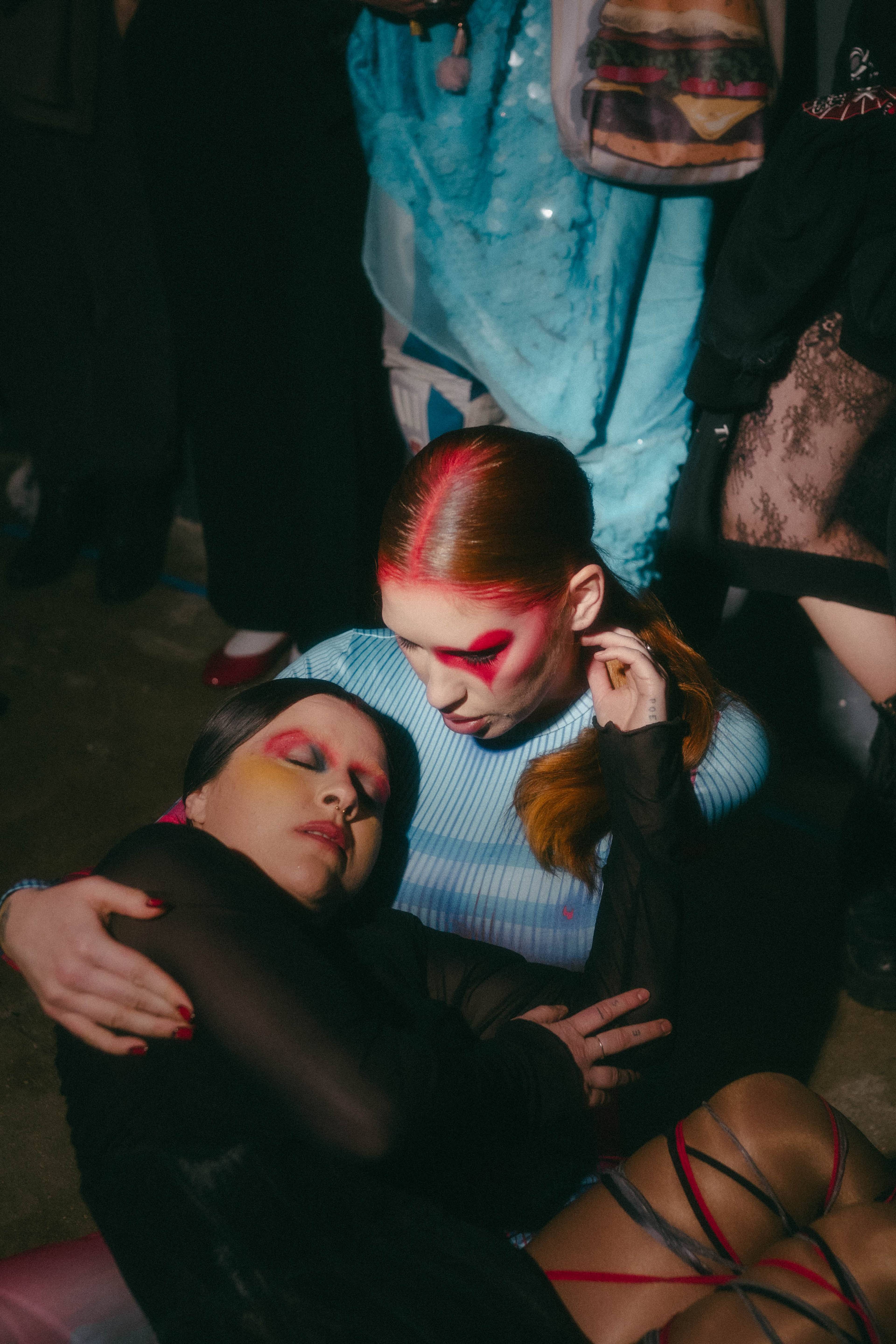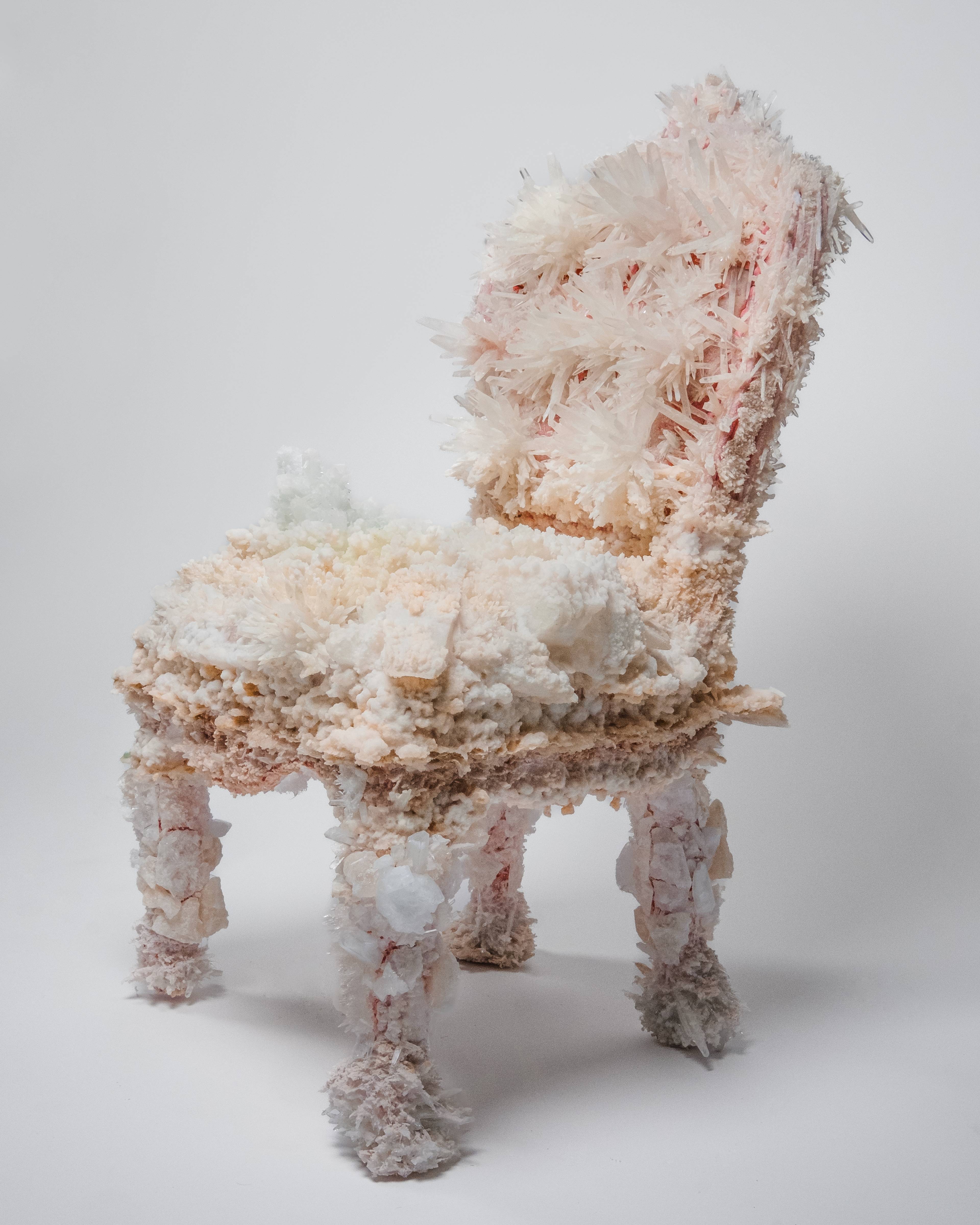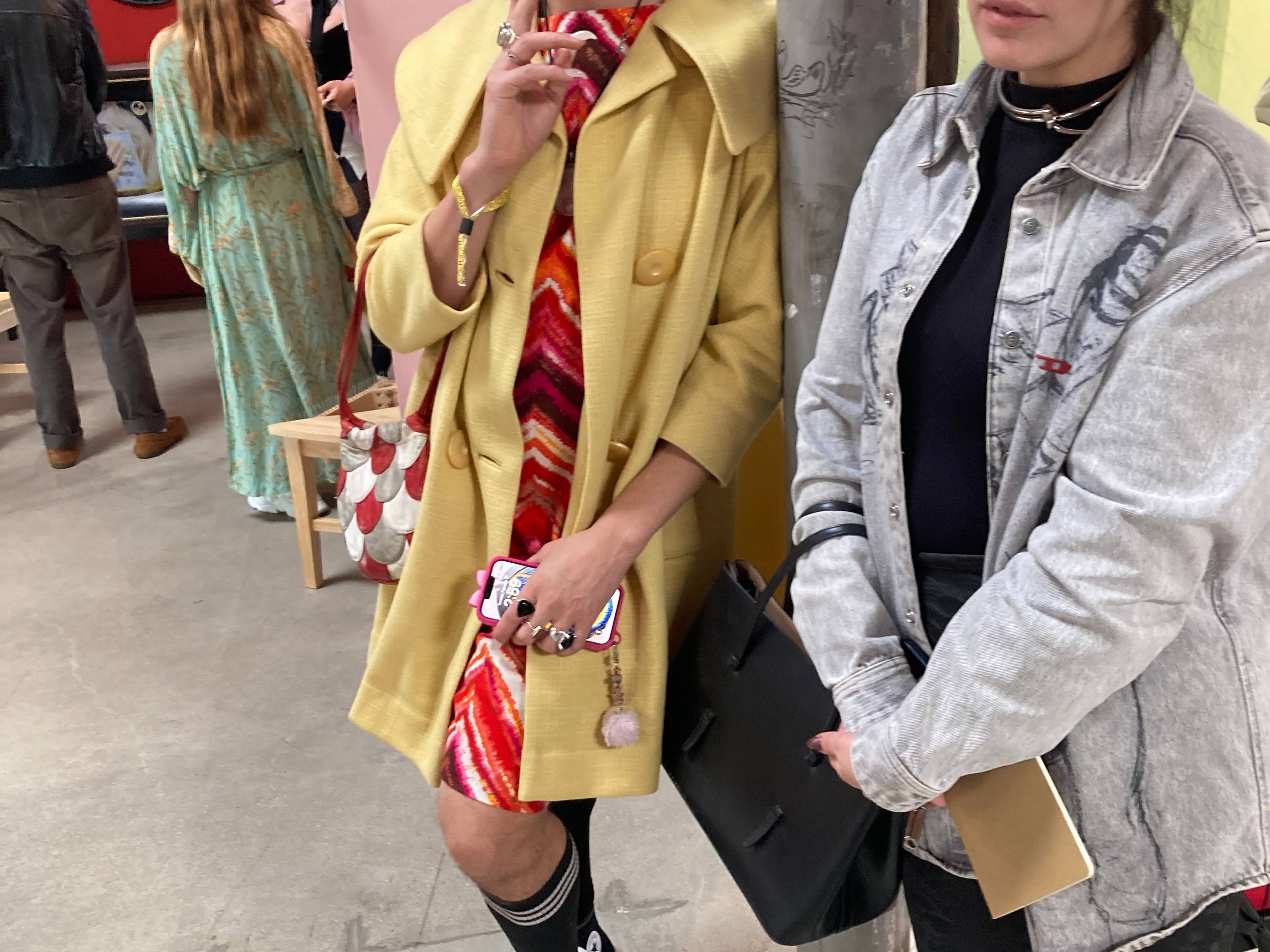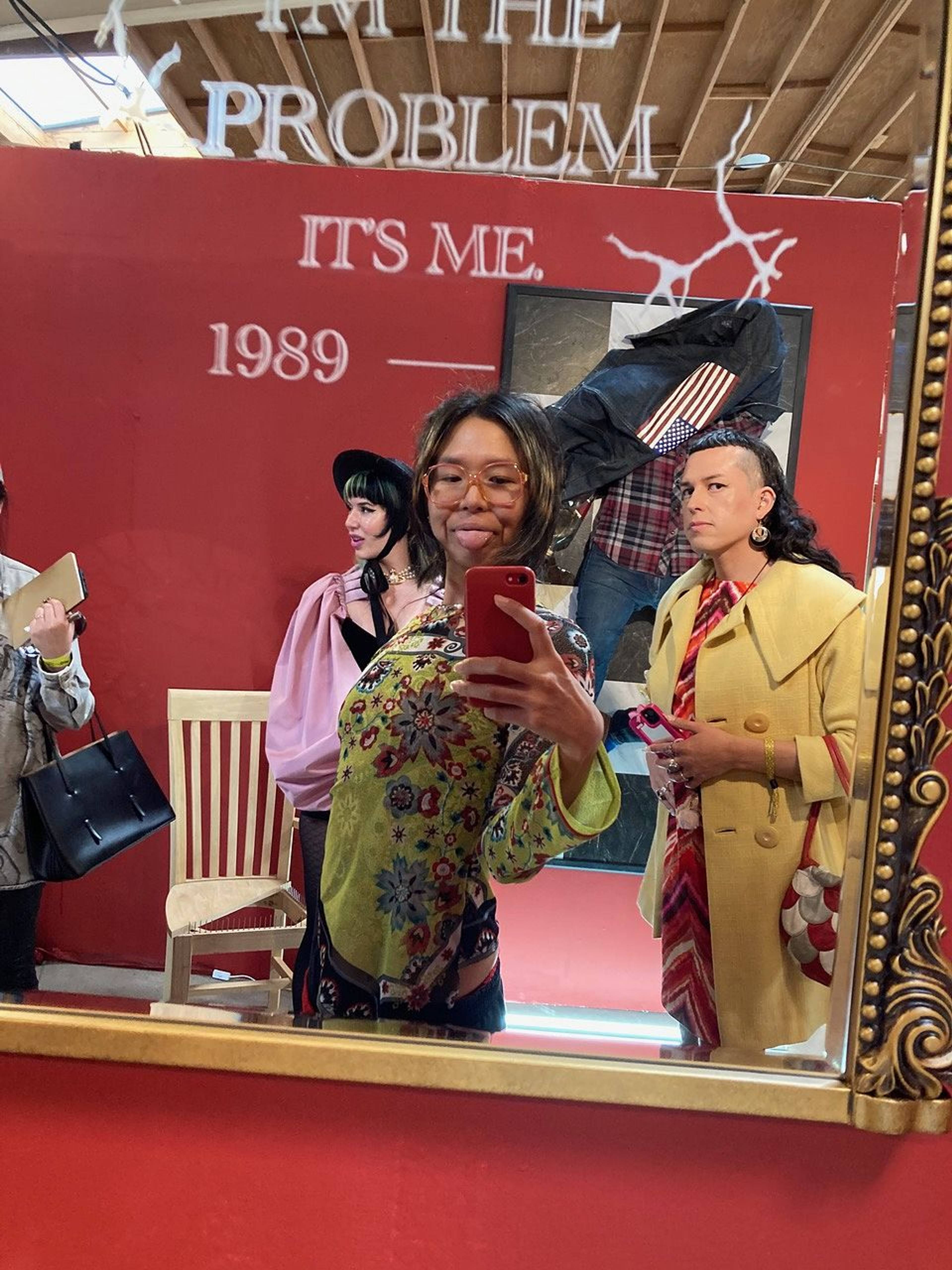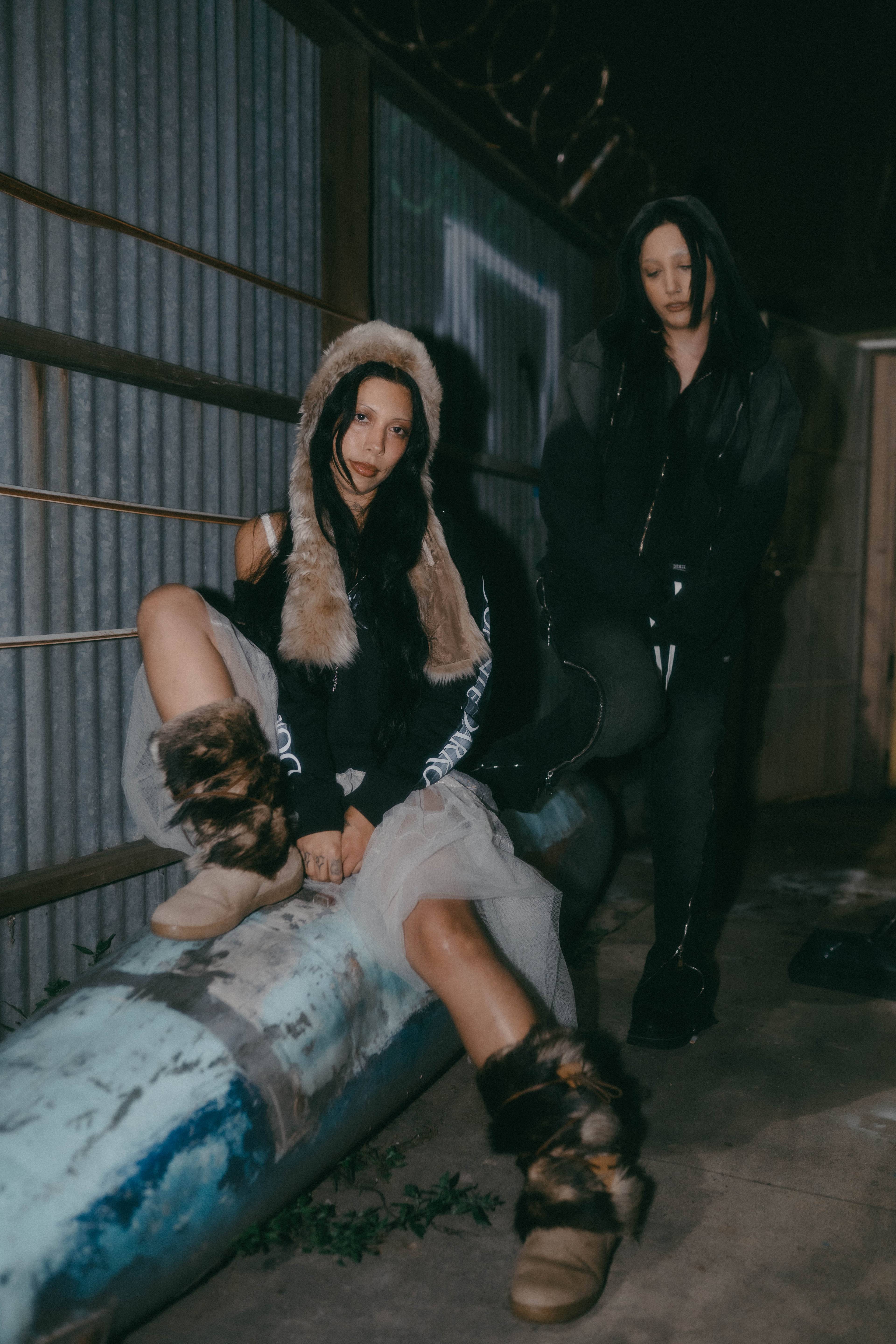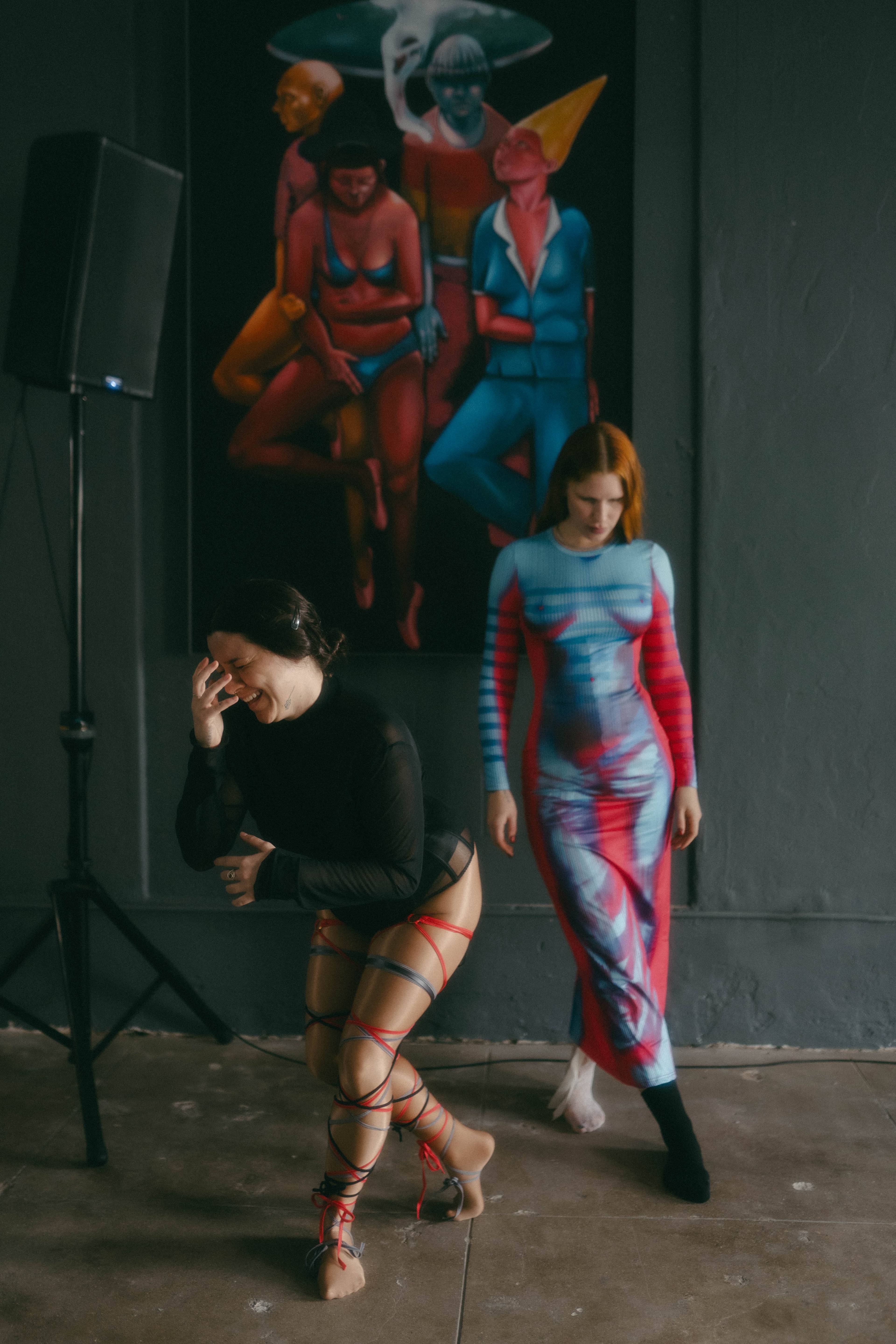“I forgot that it’s art week or whatever,” a photographer in my yoga class said, rolling her eyes. It’s usually easy to ignore whatever is happening outside your home in Los Angeles, a city whose social scenes are cucked by long commutes and entrenched inertia. There is seldom a sense that you must go to this or that party, because everyone will be there. Instead of forming interconnected ecosystems, artists tend to retreat into cliques that revolve around each other while doing their own things. FOMO doesn’t really exist here. But for one week only, when the big art fairs come to town, it’s possible to discern the emergence of something that resembles a Scene, or, as Howard S Becker puts it in his 1982 book Art Worlds: “the cooperative networks through which art happens.” And, unlike the photographer, I felt an irresistible urge to break out of my bubble, chasing a feeling that something was happening out there that I absolutely needed to see.
The one thing I absolutely did not need to see was Frieze, the blockbuster art fair that serves as ground zero of this week-long extravaganza of thirsty art-world networking. Frieze peaked in 2019, the first year it landed in Los Angeles, when the fair pulled an unforgettable stunt: taking over a Paramount Pictures studio lot designed to resemble downtown New York. Wandering around on acid, I stumbled into galleries in fake brownstone buildings and heard impromptu poetry readings on the fire escapes. When the fair moved into a sterile big white tent near the Santa Monica Airport in 2023, it reverted back to its true form: a labyrinth of disconnected art made for the very rich. Last year, I got such a bad headache that I wound up getting a laser facial at a booth sponsored by a luxury skincare brand and vowed never to return.
This year, I decided to focus on the pop-up shows and performances happening on the sidelines, which is where I decided the real action was happening. The only fair I braved was SPRING/BREAK, which focuses on more offbeat works from local artists. There, I ran into Gage Spex, co-founder of New York’s seminal queer party palace The Spectrum. It was surreal to see Gage outside the nightlife spaces where they typically reign over the dance floor in face paint and avant-garde alienware. “Oh, I decided to go with a little light drag,” they said coyly, spinning around in a 60s housewife dress.
Kendalle Getty, The Golden Child, 2022, polyresin chair, home-grown crystals. © 2024 Kendalle Getty
Curator Gage Spex. Photo: Michelle Lhooq
Gage was making their curatorial debut at the fair, presenting a solo show called “Hostile Home” by the artist Kendalle Getty, who arrived in billowing pink sleeves and neon green hair. Getty’s mother, Cynthia Beck, was the mistress of composer and oil heir Gordon Getty, and Kendalle only discovered her status as a “bastard princess” (as she refers to herself in her Instagram bio) when she was twelve. “Hostile Home” is a semiotic analysis of family, belonging, and privilege, informed by Getty’s struggle to assimilate her father’s true identity. “To smack one’s head against the ceiling of one’s privilege is a necessary experience,” she told Dazed.
Unlike the unruly glamor of The Spectrum, which always felt like the palatial living room of the Brooklyn queer community, Getty’s work offered an antagonistic vision of “home”: armchairs spiked with nails, a messy table of half-eaten food, a mirror engraved with Taylor Swift lyrics (“It’s Me, Hi. I’m the Problem”). A TV in the corner displayed a short film scene of a person giving a blowjob. “I love this already,” said Katie Rex, entering the booth. The erstwhile organizer of New York techno/fetish party Bound, Rex had also recently pivoted to a new daytime role as the arts and lifestyle editor at Document Journal.
Behind us, Getty was explaining how she grew enormous shards of crystals on one of her $35,000 armchairs using a homemade salt solution. A collector in a suit listened attentively, nodding.
“Are you interested in curating more art shows?” Rex asked Gage. “To be honest, this show is me dipping my toes in,” Gage replied. Behind us, Getty was explaining how she grew enormous shards of crystals on one of her $35,000 armchairs using a homemade salt solution. A collector in a suit listened attentively, nodding.
I wandered over to the Albert Projects booth, wondering if the party girls who reigned over 2010s New York nightlife – myself included! – were growing up and getting restless. Hedonic nightlife and druggie spirals no longer feel inherently liberatory: We’ve reached the point in the culture where basic bitches are claiming Berghain and ketamine for pseudo-subversive edge, and anyway, the drug supply is so contaminated in the US that you can’t snort anything without fear of a fentanyl overdose.
I asked Diego Lopez, director of the gallery, if he thought the powdered-drug paradigm might be shifting. “A lot of the allure of drugs is the mystery around them,” he said, standing in front of Christine Stromberg’s hefty painting of a purple-skinned bodybuilder clutching her heart like a Madonna, called The Heart is a Lonely Hunter (2020). “Before social media, you might not hear about overdoses, but now you’ll read something immediately if a person passes away,” Lopez continued. “You lose people and it reminds you of how dangerous drugs really are.”
The author with curator Gage Spex
“Addiction is a way for us to see something that is invisible,” nodded Monica Mirabile, a performance artist from the New York-based dance duo FlucT, who was showing her debut painting collection, “Guidance,” with the gallery. Invisible states and secret realms are central motifs, inspired by Mirabile’s obsession with near-death experiences. Mirabile told me she restarted her painting practice shortly after her father’s death, and the works explore, as the show notes put it, “the invisible forces that can be sensed in the interstitial space between life and the afterlife.” The figures in Mirabile’s paintings shared the sanguine poses of her dance performances, crouched and draped in the arms of nearly translucent spirits, in otherworldly landscapes of red earth and black skies. I gazed at the soft contours of their breasts, arms, and hair, folded into tender gestures of care, and noticed a child next to me doing the same. The paintings offered a vision of grief-streaked hope, the realest kind, in a time when it felt too easy to sink into snide cynicism or vacant optimism.
Mirabile invited me to her dance performance later that week at Albert Projects’ gallery space, warning me that the show would be chaotic. Eartheater, under her alias Trinity Vigorsky, was performing alongside her, and a post on her Instagram had notified the Eartheater stans, who’d RSVP’ed to the event in droves, forcing the tiny gallery to declare that the party would be strictly guestlist-only. Everyone was anxiously anticipating a scene, which, in this case, meant a frenzied clusterfuck.
The thought of snorting cocaine all night in a crowded bar of “art people” gave me anxiety. I fell asleep early instead.
Stuck in traffic for an hour on the way home, I considered two late-night options. I could either stop by a group show taking place in a fake bar called “Los Angeles Bar,” where the New York karaoke event Throats would likely be hosting hot, drunkenly caterwauling scenesters. Or, I could attend a party hosted by a triumvirate of hard-partying galleries – Lomex, Gaylord Apartments, and O-Town House – at a vaguely illegal bar called Yacht Club, where an actual shipwrecked boat in the middle of the venue served as a stand-in for the general vibe. The thought of snorting cocaine all night in a crowded bar of “art people” gave me anxiety. I fell asleep early instead.
I woke up to the news that I’d missed the scandal of the week. A friend who attended reported back: There were police cars at the door when he arrived, because a canceled art curator had gotten kicked out after getting aggressive with his girlfriend, then punched someone. The cops were called. Speculation about this incident became the salacious gossip of the town: Rumors circulated that a gun was pulled and mace was sprayed, panicking the male strippers who were performing inside.
“There was no gun,” sighed Scott Cameron Weaver, the O-Town House gallerist who, as the most grown-up of the party’s hosts, found himself at the center of the rumor mill. Weaver emphasized that most people inside the bar had no idea a fight had happened, and the outsized attention on the curator’s abusive behavior was perhaps more symptomatic of art fair-induced malaise, or a broader societal tendency to fixate on bad boys misbehaving. “We need to stop talking about this choleric asshole causing trouble,” Weaver said. “There are too many of these men in the world, and we certainly have better things to talk about.”
A month ago, while visiting family in Singapore, I watched the Indonesian duo Raja Kirik bring a Javanese trance dancer on stage for a musical performance at Singapore Art Museum during the city’s own Art Week. Jathilan horse-dancing arose in the aftermath of an unsuccessful attempt by a Javanese prince to overthrow the region’s Dutch colonial masters, and practitioners fall into a trance as they emulate the movements of a horse. Highlighting this anti-colonialist folk tradition, Raja Kirik’s work felt like a revelation – another sign of Southeast Asia’s art and music scenes undergoing post-colonial awakenings. As the duo played a combination of gamelan and synthesizers, the crowd of young Singaporeans turned rapturous.
I thought about Raja Kirik while watching another ritual-based performance by the artist-musician Jojo Abot at a gallery called Le Louver in Venice (LA). Described as “an immersive spatial opera” where “portals open to the divine,” Abot’s performance accompanied her textiles and video work, which draw from the spiritual traditions of her native Ghana. Abot began the ritual by strewing roses and puka shells around the rim of a stage, which occupied the middle of the brightly lit gallery. Two dancers accompanied her on both sides, their faces and feet flecked in gold and black paint. Abot’s voice was magnificent, carrying the range and emotional earthiness of Santigold, but as she started singing about being draped in “cosmic fur” and the “divine feminine,” my attention wandered to the front row of mostly older, wealthy white people who were eating this up. Middle-aged women gazed at Abot with their mouths slightly agape, thrusting their hips to the rhythms. They gasped with delight and put their hands in a prayer gesture as Abot tossed roses into the crowd.
The whiteness of this wealthy, West Side audience was a glaring contrast to Abot’s West African-meets- West Coast spiritualism. Compared to Raja Kirik’s performance, which played for a crowd of young fellow Southeast Asian artists, Abot’s reminded me of the exotification of the Other that sits at the heart of the art world’s often performative wokeness. “This work is about love,” Abot proclaimed, pointing to the door, “and if you don’t agree, there’s the exit!” The crowd burst out in cheers. Post-show, I spotted performance artist William Ylvisaker breathing deeply, soaking in the performance’s afterglow. What did he make of the crowd? “I just wish more of our friends who are artists of color could have seen this,” said Ylvisaker. “I’m sure the white ladies had a blast, but it’s a question of who really needed it – who could have benefited most.”
Left: Mia Carucci at the opening of “Guidance,” Albert Projects, Los Angeles, 2024. Photo: Kat Nijmeddin
Monica Mirabile and Eartheater at the opening of “Guidance,” Albert Projects, Los Angeles, 2024. Photo: Kat Nijmeddin
After Abot’s ritual I rushed to Mirabile’s performance, discovering to no one’s surprise that the gallery was not letting anyone in.
“Monica’s my friend, I just want to see her work,” I pouted, as the bouncer stopped me from slipping into the door.
“We’re not letting anyone in right now,” the door person said firmly.
“But I’m on the list!” I whined, rolling my eyes.
“Listen, this will go so much smoother if we’re nice to each other,” said the door person, a smile playing on their lips.
I laughed and introduced myself, and, five minutes later, was in. Climbing on top of a cooler brought in by a vendor selling mushroom tea, I peered over the crowd and saw Instagram influencer and musician Mia Carucci writhing around in a bra on a pile of dirt. Then, the audience parted and Eartheater climbed a ladder in a corner, flashing a torchlight into the pitch-black room. A ghostly audio piece began to play, composed by Mirabile from snippets of her father’s voice, audio produced by the late musician Sophie, and strangers sharing their near-death experiences. Even though I could only glimpse snatches of Mirabile and Eartheater wrestling on the ground through the pressing, urgent bodies of the crowd, their DIY performance felt like an occult offering made for us, while Abot’s show made me wary of the commodification of folk ritual for a luxury class.
Later, in the backstage green room, Mirabile wiped the makeup off her face and told us that we could go to an afterparty happening in a Beverly Hills mansion that was so secretive that it required a password. I wondered if it was the same “art world prom” party that I’d heard was happening at the home of tech mogul Michael Heyward, or was it the celebrity DJ Calvin Harris? (The rumors said both.) “It could be interesting anthropologically for, like, five minutes,” Mirabile laughed. What’s the vibe? we asked. A text from someone at the party told us everything we needed to know: “Rich people complaining.” Without any further discussion, we packed up and went home.
___


